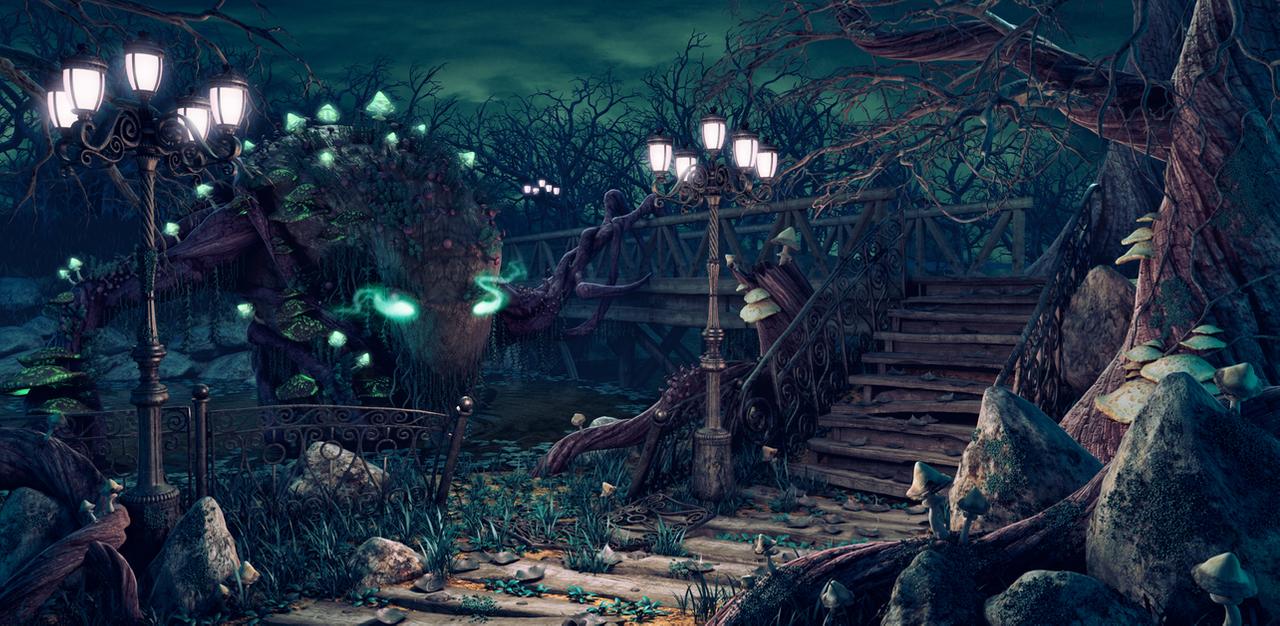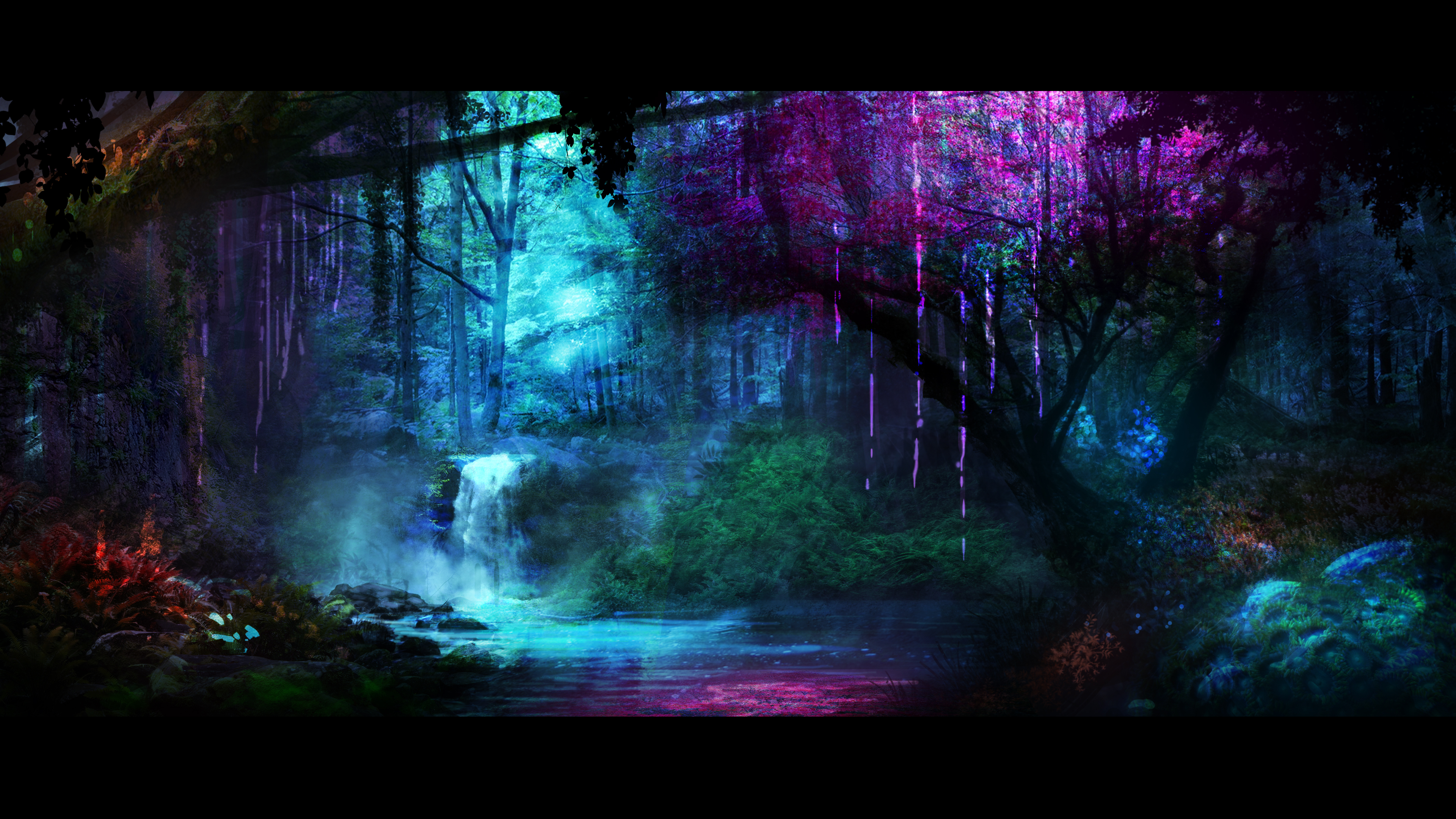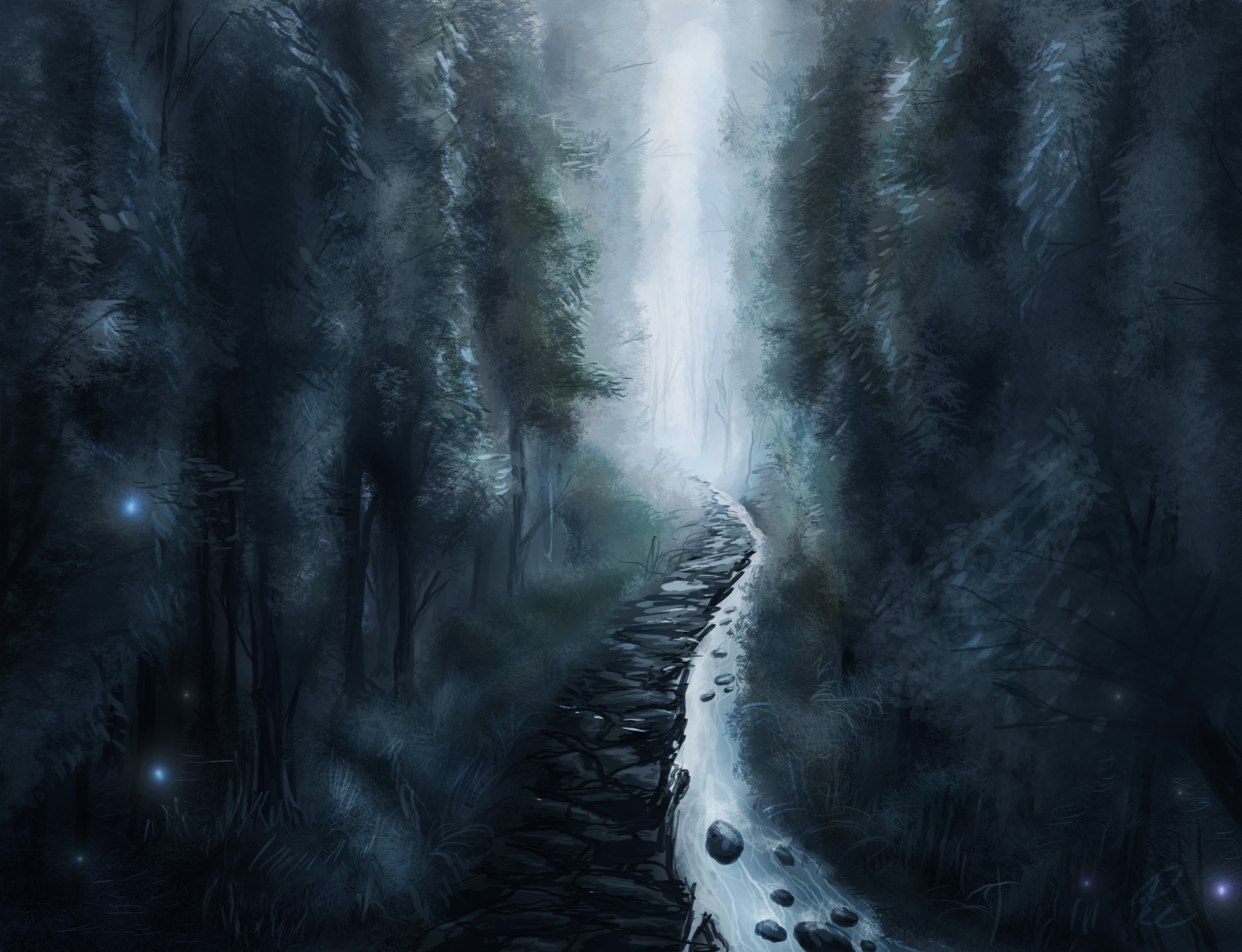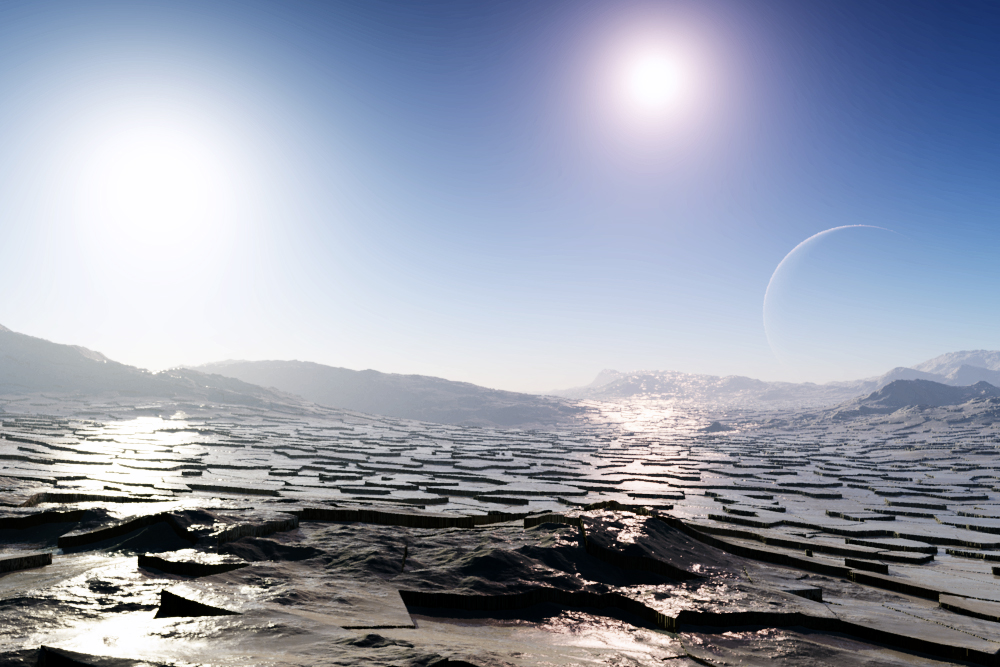Leaving Aelusia felt bittersweet. On one hand, we jumped at the opportunity to progress, eager to leave behind the disquieting presence of the drifters. On the other hand, the Flickerwood Orchard was beautiful, far more interesting than the mundane sights found back home.
When we crossed the border into Lartasia, with its vibrant color and unsettlingly friendly fauna, we couldn't believe our eyes. We felt the effects of Mania immediately. Even now, I fail to muster words to fully describe the experience. Simon came the closest, in my mind.
Regarding the experience, he said, "This must be what it is like to see the world through rose colored glasses."
This nation bleeds nostalgia.
The effects of Mania linger even after you've left. Their is a smell, a taste, a feeling that attaches itself to the memory of your visit. The land is stunning and mysterious, but also perilous. The people are kind and hospitable, but staggeringly easy to offend. This is a place of contradiction, a place of wonders and horrors alike.
As one travels along the makeshift roads toward the eastern border of Dis and The Freeholds, they will find themselves in Aelusia. This is where Lartasia begins, a largely unknown land with bizarre customs and strange connections to the land its people inhabit.
Lartasia is the only place where Informal Ozolithian continues to be spoken. Apart from the provinces, Lartasia is the final bastion of Ozolithian culture, though it's been transformed and has evolved much since the fall of the empire. Many would argue it has little in common with Ozlith.
While it uses an offshoot of
Vigor Economies in the form of
Lartasian Vigor, the nation's proximity to
Mania, one of many
Universal Maladies, has drastically altered it. It is said to be the birthplace of
The Tablin, and is the world's greatest mystery among circles of explorers in
The Freeholds and
Estoya .
History
Lartasians trace their ancestry to
Ozlith, and a tribe of humans annexed into the empire nearly twelve hundred years ago. The Lartasians remained solidified in The Ozolithian Empire for four hundred years before the empire fell, but due to how far they were from the capital, they rarely engaged with the empire itself.
They maintained independence, save for the occasional payment of tribute. When the empire finally fell after
The Battle of The Godsgrave, they found themselves in the path of the rampaging horde and without the protection the empire promised. They fled their land and traveled north along the coast, finally settling in the northern region they inhabit today.
They started as small tribes, but over the centuries merged into a nation they called Lartasia, an
Ozolithian term for A Nation of beauty. They became obsessed with Mania and the gorgeous landscapes within it. The people spread across the region, forming many separate tribes, each with its own customs.
The Matchmakers
Arcanists skilled in
Arcana Sanguis began to study blood in a different way, their curiosity and inventive nature sparked by Mania. They began looking inward, studying the nature of blood and how it passes down to one's offspring. They discovered how some genes are recessive, some are dominant, and how some are malicious in nature.
These mages reported their findings, and the people were driven to action. They subjected themselves to experiments in the hope that they would rise through the ranks of society. Many died hoping somewhere deep down in their genetic code was something special, valuable to nobles who wish to bear the finest heirs.
The matchmakers cared little for their power, only the knowledge muttered. Their meddling with genetics as well as their discoveries on what genes are preferred over others cemented the future of Lartasia and gave rise to Daimyo, noble families that make up the highest caste of Lartasian society.
The Daimyo
The Daimyo emerged around three hundred years ago, a strange twist on the feudal system used by their western neighbors in the Freeholds. No one knows how or why, but many believe they emerged after the emphasis of genetic purity became a staple of society. It wasn't about "keeping it in the family." Incest was the quickest way for a family to end up on the bottom ring of the social ladder.
The Daimyo emerged when certain members of scattered tribes found they had favorable genes, and if they bore children with someone of equally favorable genes, the child would benefit twice as much. This elevated them above others, making marriage heavily restricted.
The Matchmakers would negotiate marriages with various members of
society as an experiment, and the result was The Daimyo, genetically pure bloodlines only suited to breed with those of equally pure genetic lines. They are noble houses, each owning land with Daimyo of a lesser line beneath them.
Fun Fact: The Tablin
The first tablin to appear in the world originated in Lartasia. They were cast out of society, seen as less than even the seedless caste. They left en masse and stretched across the globe over the centuries.
The first to emerge in Estoya wore masks, and many believe this came from their Lartasian Roots. While Estoyan Tablin have dramatically altered the tradition, those in Lartasia have changed little in their views.
Tablin are treated poorly in Lartasia, and it's recommended they avoid the nation unless protected. Hate crimes are common, and seldom end with the Tablin alive.





Great stuff as always, Dyl <3
Creator of Araea, Megacorpolis, and many others.
Why thank ya Q!